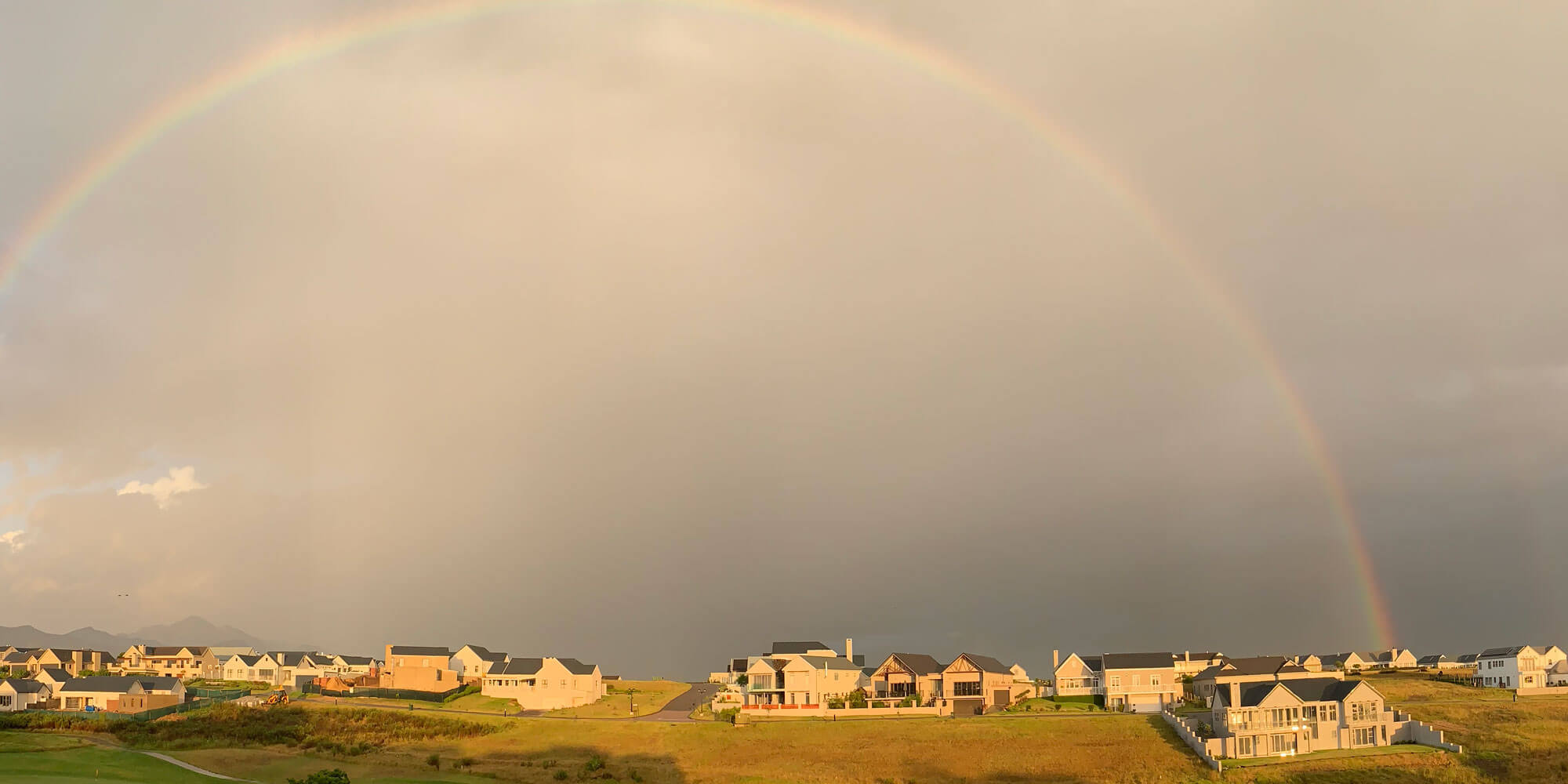Advertisement
Among the many things we had to worry about this year was the spectre of half-finished constructions just sitting there – some with roofs, some with half roofs, and some completely roofless and exposed to the elements.
It’s kind of a depressing sight, and it brought home very starkly the fact that business was not as usual. Well, things are still not quite as usual but, since the construction industry has been back at work, those half-finished houses have rapidly been becoming homes. It has been a stressful time, so we caught up with a new owner to find out how he has coped with the inevitable delays.
Charles and Daleen Rowe bought a plot at Kingswood, started building as soon as they gotthe plans passed late last year, and they imagined be moving into their new home by July 2020. Getting the plans passed by Kingswood was a breeze, Charles said. ‘If you comply with the rules in the Contractors Code of Conduct, it’s no problem at all.’ But, after that, the smooth sailing got a little less smooth.
‘We started building at the end of last year,’ he says. ‘We laid the foundations in November, and things went well until March, when it all came to a grinding halt. By then the brickwork and first floor slab were mostly done, but nothing more than that, and anyone who has built a home knows you at least want the roof on if you have to put construction on hold.’
Advertisement
As lockdown restrictions were relaxed, he could start building again, which his builder, Charles La Cock of , CLC Construction, did with great enthusiasm. But there were still a few hitches. Because of the lockdown and restrictions on imports, there was a huge backlog in materials, which could have caused further delays. Realising that everyone would be clamouring for materials, they immediately placed their orders for what was needed. It soon got sorted out, as the industry moved into top gear to catch up on lost time, and construction has been going really well the last few months.
So, as we chatted to him, he showed us around his almost-finished new home, which finally looks a lot more like a house than a building site. He particularly loves the views in Kingswood, and the architect Chris Kleu has designed the house to make the most of them and has carefully oriented the house to take full advantage of the sun, creating warmth in winter, shade in summer, and natural light throughout the year. Construction is scheduled to be completed early November, and they will be moving in soon thereafter.
‘There will still be a lot to do,’ Charles says. ‘Daleen has started with the garden and hopes to get it looking presentable before Christmas. And moving is always quite a mission. But,’ he says with a huge smile, ‘I can’t wait to chill out with a cold beer or a glass of good wine on our veranda to admire the view.’ If you look around, you will notice that building is going ahead at a great rate all over the estate, so you can look forward to more new neighbours moving in and enhancing the Kingswood community.
Update: New Developments
The estate is growing fast, with 155 additional properties recently brought to market in Phase 4, which is designed to be user-friendly for both serious golfers and non-golfi ng families. Phase 4 infrastructure is about 85% completed. Proposed for future development is the clubhouse, so watch this space to see how this unfolds.
Daniel de Wet, who is responsible for and personally involved in all operations such as maintenance and upkeep of the facilities and infrastructure, says: ‘We have 620 levy-paying stands at present, which will increase by another 155 when Phase 4 is completed early in the new year. We have 463 completed homes, 25 under construction, and 124 vacant properties of which 69 have approved plans. We have grown by 40 homes a year since 2011.’
This bodes well for the future of the estate, particularly as – as Dan explains – ‘we have a wonderful pool of architects who are familiar with our aesthetics and style guidelines, and who design fabulous homes individually tailored for each client.’ This, he continues, is important, because ‘nobody wants to live in an estate of cookie-cutter houses. This way we ensure diversity, but to a well-defined standard and within a specific aesthetic.’



